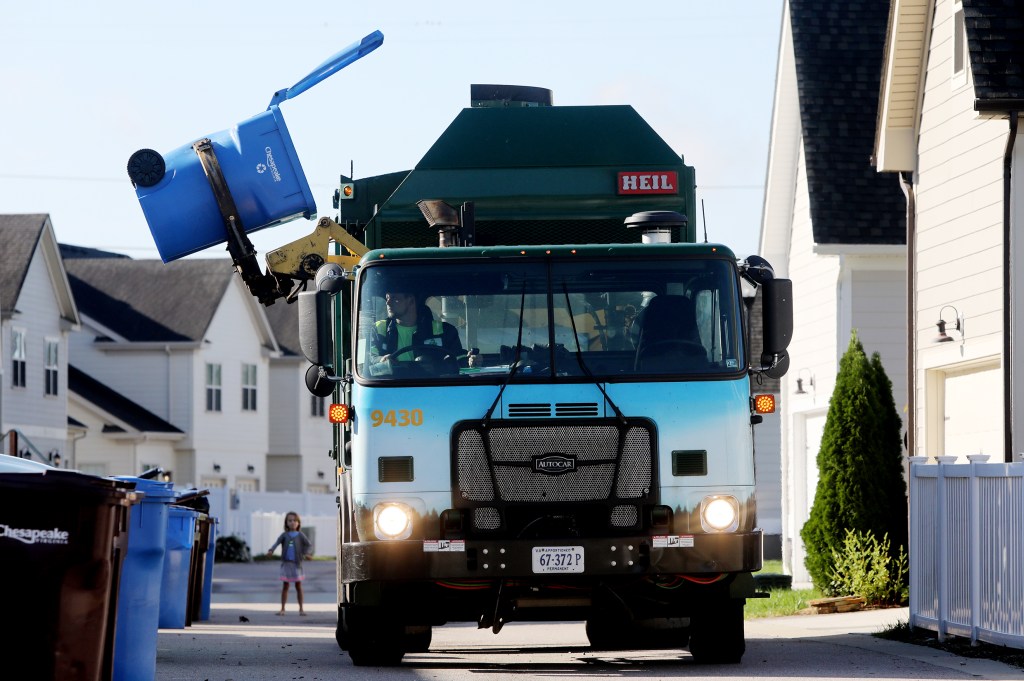The End of an Era: Virginia Peninsula Abandons Curbside Recycling
On September 30, 2024, residents across Virginia’s Peninsula region woke up to a new reality: their curbside recycling bins would no longer be collected. The Virginia Peninsulas Public Service Authority (VPPSA) board made the controversial decision to cancel recycling services for York County, Williamsburg, James City County, and Poquoson, affecting thousands of households that had grown accustomed to this environmental service.
This decision represents more than just a change in waste management logistics—it’s a stark reminder of the fragility of recycling infrastructure in America and the complex economic realities that municipalities face when trying to balance environmental responsibility with fiscal sustainability.
Understanding the Decision: Why Recycling Programs Fail
The VPPSA’s decision to eliminate curbside recycling wasn’t made in a vacuum. Across the United States, recycling programs are under unprecedented pressure due to a combination of factors that have fundamentally altered the economics of waste processing.
The China Factor and Global Market Disruption
Since 2018, when China implemented its “National Sword” policy, the global recycling market has been in upheaval. China, which previously accepted roughly 40% of the world’s recyclable materials, suddenly imposed strict contamination standards and dramatically reduced imports. This policy shift left American recycling programs scrambling to find new markets for their materials, often at significantly higher costs.
Local authorities like VPPSA found themselves paying to process materials that were once profitable to collect. The economic model that had sustained recycling programs for decades effectively collapsed overnight, forcing difficult decisions about program viability.
Contamination Challenges and Processing Costs
One of the most persistent challenges facing recycling programs is contamination—when non-recyclable items end up in recycling bins. Contamination rates in single-stream recycling programs often exceed 25%, requiring extensive sorting and cleaning processes that dramatically increase operational costs.
Common contaminants include food waste, plastic bags, electronics, and hazardous materials. These items can damage processing equipment, reduce the quality of recyclable materials, and increase labor costs. For smaller regional authorities like VPPSA, these additional expenses can quickly make recycling programs financially unsustainable.
The Broader Implications: Environmental and Social Impact
The elimination of curbside recycling in the Virginia Peninsula region has implications that extend far beyond waste management logistics. This decision touches on environmental sustainability, social equity, and the future of community-based environmental programs.
Environmental Consequences
Without convenient curbside collection, recycling rates typically plummet by 70-80% according to waste management studies. This means thousands of tons of potentially recyclable materials—aluminum cans, glass bottles, paper, and certain plastics—will likely end up in landfills instead of being processed into new products.
The environmental cost is significant. Recycling aluminum cans, for example, uses 95% less energy than producing new aluminum from raw materials. Similarly, recycling paper reduces methane emissions from landfills and preserves forest resources. The loss of these environmental benefits compounds over time, affecting regional sustainability goals and carbon footprint reduction efforts.
Social Equity and Access Issues
The shift from curbside collection to drop-off locations creates a significant barrier for many residents. Elderly residents, individuals without reliable transportation, and families with limited time face particular challenges in accessing alternative recycling options.
This transition effectively creates a two-tiered system where environmental participation becomes dependent on personal resources and mobility. Communities with higher concentrations of vulnerable populations may see particularly dramatic decreases in recycling participation.
Alternative Solutions and Innovations
While the Virginia Peninsula’s situation represents a setback, communities across the country are developing innovative approaches to recycling challenges that could serve as models for the future.
Technology-Driven Solutions
Advanced sorting technologies, including artificial intelligence and robotics, are making recycling facilities more efficient and cost-effective. Some communities are investing in optical sorting systems that can identify and separate materials with greater precision than traditional methods, reducing contamination and improving material quality.
Smart bin technology is also emerging as a solution, with sensors that can detect contamination levels and provide real-time feedback to users, helping reduce processing costs over time.
Public-Private Partnerships
Some regions have found success through partnerships with private companies that specialize in recycling logistics. These partnerships can provide expertise and economies of scale that smaller public authorities may lack, while maintaining public oversight of environmental programs.
Extended Producer Responsibility Programs
Progressive states are implementing Extended Producer Responsibility (EPR) programs that shift recycling costs from municipalities to manufacturers. Under these programs, companies that produce packaging materials are responsible for the end-of-life costs of their products, creating incentives for more recyclable design and providing funding for local recycling programs.
What This Means for Residents and Communities
For residents of York County, Williamsburg, James City County, and Poquoson, the immediate impact is clear: they must now take personal responsibility for transporting recyclable materials to designated drop-off locations. However, the broader implications extend to community values, environmental goals, and local governance.
Adapting to New Realities
Communities that maintain high recycling rates after losing curbside service typically develop strong social networks and community organization around environmental goals. This can include neighborhood collection groups, business-sponsored drop-off events, and integration of recycling trips with other errands.
Local environmental groups and civic organizations have opportunities to step into leadership roles, organizing community efforts and advocating for alternative solutions. These grassroots responses often become models for other communities facing similar challenges.
The Path Forward: Lessons and Opportunities
The Virginia Peninsula recycling situation offers important lessons for other communities and policymakers about the future of waste management and environmental programs.
The Need for Regional Cooperation
Recycling programs benefit significantly from economies of scale. Regional cooperation between municipalities can share costs and create larger, more viable programs than individual communities can sustain alone. The Peninsula’s situation might ultimately lead to innovative regional solutions that serve as models for other areas.
Investment in Infrastructure
Long-term success in recycling requires sustained investment in infrastructure, technology, and education. Communities that view recycling programs as essential services, similar to water or sewer systems, tend to maintain more stable and effective programs over time.
Key Takeaways
- Economic pressures from global market changes have made traditional recycling programs financially unsustainable for many communities
- Loss of curbside collection typically results in 70-80% reduction in recycling rates, significantly impacting environmental goals
- Social equity issues emerge when recycling becomes dependent on personal transportation and time resources
- Technology solutions including AI sorting and smart bins offer potential paths forward for sustainable recycling programs
- Regional cooperation and public-private partnerships can provide economies of scale needed for viable recycling programs
- Extended Producer Responsibility programs shift costs from municipalities to manufacturers, creating sustainable funding models
- Community organization and grassroots efforts become crucial for maintaining environmental programs when government services are reduced
This article is based on reporting from the original source

Born and raised amidst the hustle and bustle of the Big Apple, I’ve witnessed the city’s many exciting phases. When I’m not exploring the city or penning down my thoughts, you can find me sipping on a cup of coffee at my favorite local café, playing chess or planning my next trip. For the last twelve years, I’ve been living in South Williamsburg with my partner Berenike.

